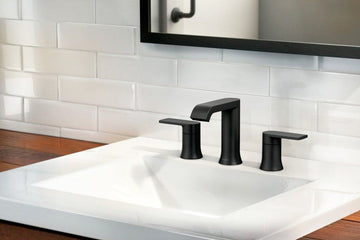If you are facing an annoying issue with your plumbing, particularly a faucet that drips or leaks, you're not alone. Many homeowners often find themselves asking, how to fix a leaky bathroom faucet? This situation can lead to more significant water damage over time and increased utility bills. In this article, we will provide you with exclusive insights and actionable steps to remedy this problem quickly and effectively.
Before diving into the specifics, its crucial to understand that a fundamental grasp of your bathroom fixtures and basic plumbing skills can make a big difference. Armed with the right tools and information, you can face this commonly shared household challenge head-on. Lets drive right into the process!

Understanding the Anatomy of Your Faucet
The first step in how to fix a leaky bathroom faucet is understanding its components. There are various types of faucets, but they generally consist of the following parts:
- Handle: This is what you turn to control water flow.
- Spout: The part where water flows out.
- Cartridge: A critical component that helps to regulate water flow and temperature.
- Washer: This is the small rubber piece that creates a seal to prevent leaking.
Common Causes of Faucet Leaks
Now that you know the faucet's components, lets look at common issues that lead to leaks:
- Worn Out Washers: Over time, washers can wear down, leading to leaks.
- Faulty Cartridge: A malfunctioning cartridge may not adequately seal, allowing water to escape.
- Corroded Parts: Age and minerals in water can corrode metal components, resulting in leaks.
Terrific Tools You Will Need
To start the repairing process, gather the following tools:
- Adjustable Wrench: Useful for loosening fittings.
- Screwdriver: For removing screws and covers.
- Replacement Parts: Have washers and cartridges ready according to your faucet model.
- Towels: To catch any drips and keep the area dry.
Steps to Fix a Leaky Bathroom Faucet
Follow these steps carefully to address the issue:
- Turn Off the Water Supply: Look for valves under the sink and turn them off. If you can't find them, shut off the main water supply.
- Drain the Faucet: Open it to drain any remaining water and relieve pressure.
- Remove the Faucet Handle: Using a screwdriver, remove the screws holding the handle in place, then gently pull it off.
- Inspect the Parts: Look for worn-out washers or damaged cartridges and replace them.
- Reassemble the Faucet: After replacing necessary parts, reattach the faucet handle and screws.
- Turn the Water Back On: Slowly turn the water supply back on and check for leaks.
When to Call a Professional
While many homeowners can fix minor leaks themselves, there are times when you should consider calling a professional plumber:
- Your faucet continues to leak even after repairs.
- Signs of extensive water damage to surrounding areas.
- You are uncertain about how to proceed.
Preventative Maintenance Tips
Here are a few life-changing tips to prevent leaks in the future:
- Regular Inspections: Check your fixtures periodically for signs of wear.
- Water Quality: Maintain good water quality to prevent mineral buildup.
- Prompt Repairs: Address leaks immediately to avoid bigger issues.
Conclusion
Dealing with a leaky bathroom faucet may seem like a daunting task, but with the understanding of your faucets anatomy and the right tools, how to fix a leaky bathroom faucet can be an easy and rewarding process. Remember that if you encounter persistent issues, consulting a professional is always a wise choice.

Frequently Asked Questions
1. Can a leaky faucet cause water damage?
Yes, even small leaks can accumulate over time and lead to mold growth, structural damage, and higher water bills.
2. How long does it take to fix a leaky faucet?
Typically, it can take from 30 minutes to an hour, depending on your experience and the extent of the repair needed.
3. Should I turn off the water supply every time I fix a faucet?
Yes, it is advisable to turn off the water supply to prevent water from flowing while you are working on the faucet.
For more guidance and related issues, visit Replacing Faucets and EPA Water Efficiency.
As an Amazon Associate, I earn from qualifying purchases.






